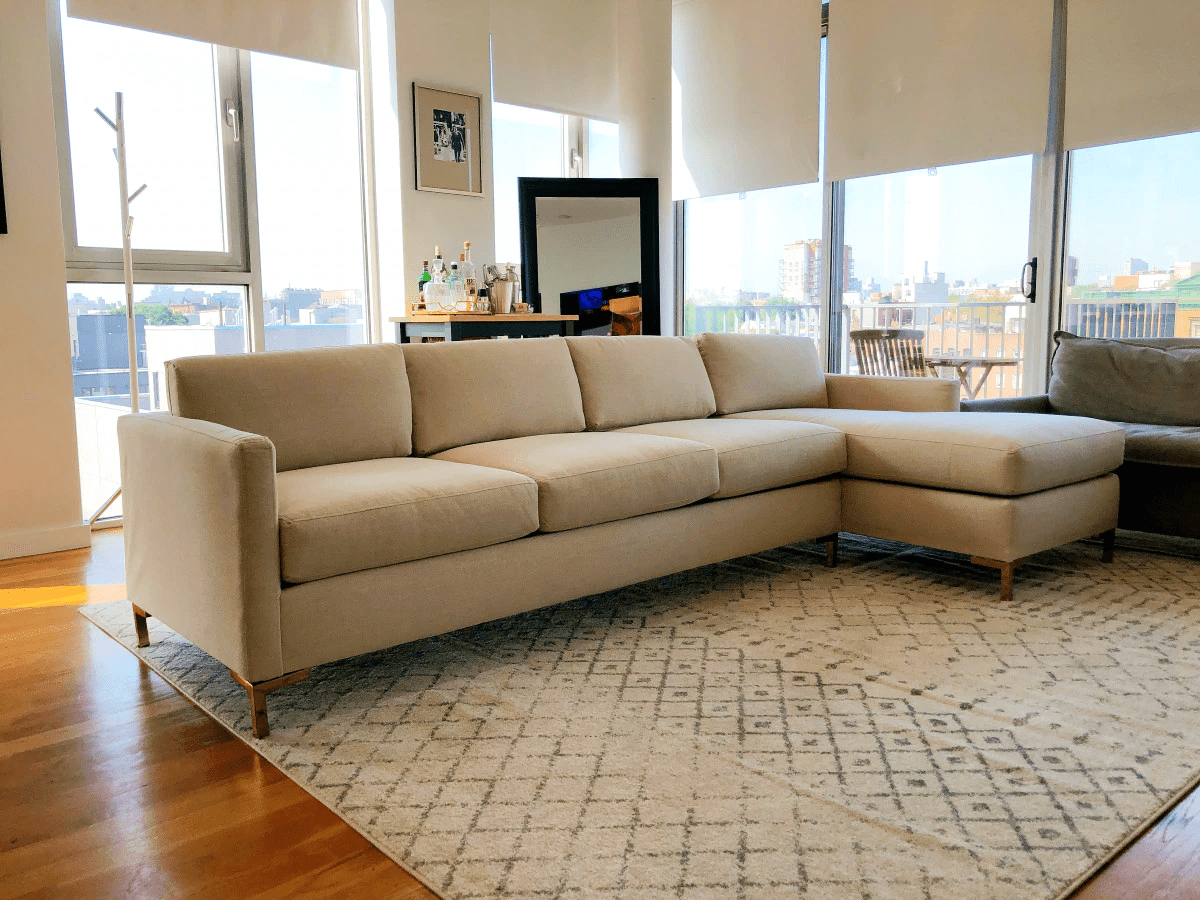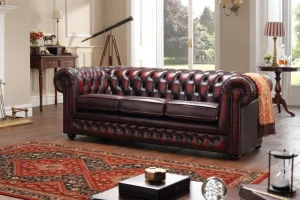Furniture upholstery is the skilled craft of covering and padding furniture with fabrics, leather, or other materials to create a comfortable and aesthetically pleasing piece of furniture. This art form not only enhances the visual appeal of your furniture but also extends its lifespan and comfort. Whether you’re looking to revamp an old piece or customize new furniture to suit your style, upholstery is the key to achieving a personalized and polished look in your home. In this blog post, we’ll delve deeper into the world of furniture upholstery, exploring the techniques, materials, and creative possibilities that make it a transformative and rewarding endeavor for DIY enthusiasts and design aficionados alike.
What is the meaning of furniture upholstery?
Furniture upholstery is a specialized craft that involves covering and padding furniture, such as chairs, sofas, ottomans, and other seating or furnishing items, with fabric, leather, or other materials. The primary purpose of upholstery is twofold: to enhance the visual appeal of the furniture and to provide comfort to those who use it.
In the process of upholstery, skilled artisans or upholsterers carefully select appropriate fabrics or materials that align with the desired design aesthetic and functionality. They then meticulously attach these materials to the furniture’s frame, often adding layers of padding or cushioning to ensure comfort. Upholstery not only transforms the appearance of furniture but also serves as a protective layer, preserving the integrity of the piece underneath.
Beyond its practical aspects, furniture upholstery is a form of artistic expression, allowing individuals to personalize their living spaces, create unique design themes, and revitalize old or worn-out furniture. It plays a vital role in interior design, contributing to the overall ambiance and functionality of a space.
The Importance of Furniture Upholstery in Home Decor
Furniture upholstery holds a significant role in home decor, contributing to both the aesthetics and functionality of your living spaces. Here are key reasons why furniture upholstery is important in home decor:
Enhanced Visual Appeal: furniture Upholstered adds a layer of sophistication and elegance to your home. The choice of fabric, color, and pattern allows you to create a cohesive and visually pleasing design scheme that reflects your personal style.
Personalization: Upholstery provides a unique opportunity for customization. You can select fabrics that align with your decor theme, ensuring that your furniture complements the overall design of your space.
Comfort and Coziness: Beyond aesthetics, upholstery greatly impacts the comfort of your furniture. Well-padded and cushioned upholstery creates a comfortable seating or lounging experience, making your home more inviting and cozy for both residents and guests.
Revival of Old Pieces: Furniture upholstery can breathe new life into old or worn-out pieces. This is a sustainable and cost-effective way to preserve sentimental items or vintage finds, ensuring they remain functional and attractive for years.
Protection and Longevity: Upholstery serves as a protective barrier for your furniture, safeguarding it from wear and tear. It shields the underlying structure and padding, increasing the lifespan of your furniture.
Versatility: Upholstery isn’t limited to just sofas and chairs. It can be applied to various furniture pieces, including headboards, ottomans, and dining chairs, allowing you to maintain a cohesive design throughout your home.
Resale Value: Well-maintained, aesthetically pleasing upholstery can boost the resale value of your home. Prospective buyers are often attracted to homes with carefully curated and comfortable living spaces.
What type of wood is used in Furniture Upholstery?
In furniture upholstery, the type of wood used for the furniture’s frame can vary depending on the specific piece and the manufacturer’s preferences. Commonly used woods for furniture frames include:
Hardwood: Hardwood species like oak, maple, cherry, and walnut are often chosen for their durability and strength. They provide a sturdy foundation for upholstered furniture, ensuring it can withstand the weight and stress of everyday use.
Plywood: Plywood, made from thin layers of wood veneer glued together, is a cost-effective and stable choice for furniture frames. It’s often used in conjunction with hardwood for added structural integrity.
Engineered Wood: Engineered wood products like particleboard, MDF (medium-density fiberboard), and plywood with a hardwood veneer are used in budget-friendly furniture. While not as durable as solid hardwood, they can still provide a stable frame for upholstered pieces.
Exotic Woods: In high-end and custom furniture, you may find the use of exotic woods like mahogany, rosewood, or teak for frames. These woods offer unique grain patterns and colors, adding to the overall aesthetic of the piece.
The choice of wood depends on factors such as the intended use of the furniture, budget constraints, and design preferences.
What are the Benefits of Furniture Upholstery
Furniture upholstery offers several benefits that enhance the functionality, aesthetics, and longevity of your furniture. Here are some of the key advantages:
- Aesthetic Enhancement: Upholstery allows you to choose fabrics, colors, and patterns that align with your design preferences, helping to create a cohesive and visually pleasing decor theme in your home.
- Comfort and Ergonomics: Well-padded and cushioned upholstery significantly improves the comfort of your furniture. Whether it’s a sofa, chair, or headboard, upholstery ensures a comfortable and supportive seating or resting experience.
- Customization: Upholstery provides an opportunity for personalization. You can tailor your furniture to match your unique style, ensuring that it complements your interior decor.
- Preservation: Furniture upholstery acts as a protective layer, safeguarding the underlying structure from wear and tear. This protection can extend the lifespan of your furniture, preserving its value over time.
- Revitalization: Old or worn-out furniture can be revived through reupholstery, saving you money on buying new pieces. This sustainable practice allows you to retain sentimental or antique items while giving them a fresh and updated look.
- Versatility: Upholstery isn’t limited to specific furniture types. It can be applied to various pieces, including chairs, sofas, ottomans, and headboards, offering design continuity throughout your home.
- Increased Resale Value: Well-maintained and aesthetically pleasing upholstered furniture can enhance the resale value of your home. Prospective buyers are often attracted to homes with appealing and comfortable living spaces.
Protection from Damage: Upholstery can help protect your furniture from stains, spills, and daily wear. Many modern fabrics are designed to resist damage and are easy to clean, ensuring your furniture remains in good condition.
Advantages of Furniture Upholstery
Furniture upholstery offers numerous advantages, but it also comes with some disadvantages. Let’s explore both sides:
Advantages of Furniture Upholstery
- Aesthetic Enhancement: Upholstery allows for a wide range of fabric choices, colors, and patterns, making it easy to customize furniture to match your decor and style preferences.
- Comfort: Well-padded and cushioned upholstery adds comfort to seating and lounging furniture, making your home more inviting and cozy.
- Protection: Upholstery serves as a protective layer, guarding the underlying furniture structure from wear and tear, spills, and stains.
- Personalization: Upholstery provides an opportunity for personalization, allowing you to create one-of-a-kind pieces that reflect your individual taste.
- Preservation: Reupholstering old or worn-out furniture can extend its lifespan, saving you money on purchasing new pieces and reducing waste.
- Versatility: Upholstery can be applied to various types of furniture, from chairs and sofas to headboards and ottomans, ensuring design consistency in your home.
- Increased Resale Value: Well-maintained upholstered furniture can enhance the resale value of your home, as prospective buyers are often attracted to stylish and comfortable living spaces.
Conclusion
In conclusion, furniture upholstery is a multifaceted art that holds a pivotal role in the world of interior design and home decor. It offers a plethora of advantages, from the enhancement of aesthetic appeal to the creation of comfortable and personalized living spaces. Upholstery not only allows you to express your individual style but also preserves and extends the life of your furniture, making it a practical and sustainable choice.
While there are challenges and considerations, such as cost and maintenance, the benefits of furniture upholstery far outweigh the drawbacks. It enables you to revitalize old furniture, protect your investments, and even increase the resale value of your home.
In essence, furniture upholstery is more than a functional necessity; it’s a transformative and creative endeavor that empowers you to craft living spaces that reflect your personality, comfort, and unique design sensibilities. Whether you choose to reupholster existing pieces or invest in custom creations, upholstery remains a valuable and versatile tool for elevating your home décor to new heights.






